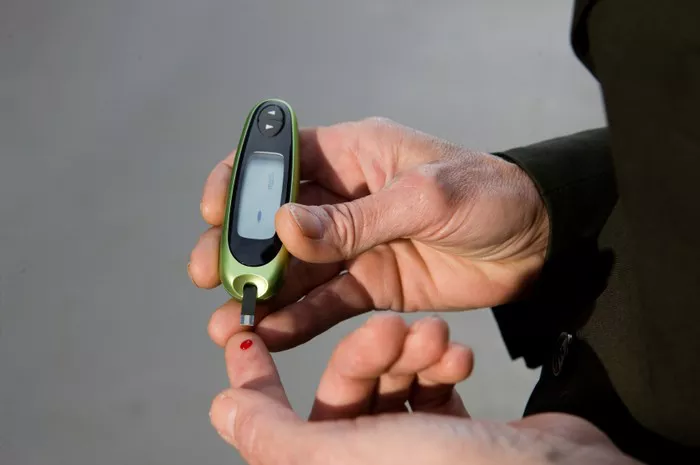Blood sugar monitoring is a cornerstone of diabetes management, providing essential insights into how the body regulates glucose and responds to lifestyle factors such as diet, exercise, and medication. Traditionally, blood sugar monitoring has relied on fingerstick tests using a blood glucose meter (BGM). However, advancements in technology have introduced more sophisticated methods for continuous glucose monitoring (CGM), offering a more comprehensive picture of blood sugar levels throughout the day.
In this article, we will explore the concept of constant blood sugar monitoring, the technology behind CGM, the benefits and challenges of its use, and how it is transforming the lives of those with diabetes.
What is Continuous Glucose Monitoring?
Continuous glucose monitoring (CGM) is a system that automatically tracks glucose levels throughout the day and night, giving users real-time data without the need for repeated fingerstick tests. A CGM system consists of three main components:
Sensor: A small device that is inserted under the skin, usually in the abdomen or the arm, which measures glucose levels in the interstitial fluid (the fluid between the cells).
Transmitter: Attached to the sensor, the transmitter sends glucose readings to a display device.
Receiver or Display Device: This can be a dedicated handheld device, a smartphone, or an insulin pump that displays the real-time glucose readings.
The CGM system takes readings at regular intervals, typically every five minutes, offering a continuous stream of data that reflects how glucose levels change over time. This enables users to observe trends, identify patterns, and make more informed decisions about their diabetes management.
How Does Continuous Glucose Monitoring Work?
A CGM system works by sensing glucose in the interstitial fluid, which is closely correlated to blood glucose levels. The sensor contains an enzyme called glucose oxidase, which reacts with glucose and generates an electrical signal proportional to the glucose concentration. This signal is transmitted wirelessly to a receiver, which converts it into a glucose reading.
While there is a slight delay between blood glucose and interstitial fluid glucose, typically around five to ten minutes, CGM provides a real-time approximation of blood sugar levels that is highly valuable for detecting trends and making timely interventions.
Unlike fingerstick testing, which only provides a snapshot of glucose levels at a specific moment, CGM offers continuous monitoring. This allows users to see the impact of meals, exercise, stress, sleep, and medications on their glucose levels throughout the day and night.
Who Can Benefit from Constant Blood Sugar Monitoring?
CGM is particularly beneficial for individuals with:
Type 1 Diabetes: For those with type 1 diabetes who are on insulin therapy, constant monitoring is crucial for preventing dangerous hypoglycemia and hyperglycemia. CGM helps with insulin dose adjustments and alerts users to rapid changes in glucose levels.
Type 2 Diabetes on Insulin Therapy: Individuals with type 2 diabetes who are using insulin, especially multiple daily injections, can benefit from CGM by maintaining tighter glucose control and avoiding large fluctuations in blood sugar.
Gestational Diabetes: Pregnant women with gestational diabetes can use CGM to maintain stable blood sugar levels, reducing the risk of complications for both mother and baby.
People with Hypoglycemia Unawareness: Some individuals, particularly those with long-standing diabetes, may not experience the typical symptoms of low blood sugar. CGM can alert them to dangerous drops in glucose levels that they might otherwise miss.
The Benefits of Continuous Glucose Monitoring
There are numerous advantages to constant blood sugar monitoring through CGM:
Real-Time Alerts and Data: One of the biggest benefits of CGM is the ability to receive real-time alerts when blood sugar levels are trending too high or too low. These alerts can be life-saving, particularly during sleep or in situations where it is difficult to recognize the symptoms of hypoglycemia.
Trend Information: CGM provides not only current glucose levels but also trends, indicating whether glucose is rising, falling, or staying steady. This information helps users understand the impact of food, activity, and insulin on their blood sugar and make proactive adjustments to their treatment.
Reduced Need for Fingersticks: While CGM systems still require calibration with a traditional blood glucose meter in some cases, they significantly reduce the need for frequent fingerstick testing. This makes diabetes management more convenient and less painful.
Improved A1c Levels: Studies have shown that CGM users experience better glycemic control, as reflected in lower HbA1c levels. CGM allows for more precise insulin dosing and meal planning, leading to improved long-term blood sugar control.
Prevention of Hypoglycemia and Hyperglycemia: Constant monitoring allows users to catch high or low blood sugar before it reaches dangerous levels. This can be particularly beneficial for individuals with hypoglycemia unawareness or those prone to severe glucose fluctuations.
Increased Confidence and Peace of Mind: The ability to constantly monitor glucose levels gives users a greater sense of control over their diabetes. Knowing that they have real-time data and alerts helps reduce anxiety and enables them to live more confidently.
Customizable Data Sharing: Many CGM systems allow for data sharing with healthcare providers, family members, or caregivers. This can be especially useful for parents managing a child’s diabetes or for elderly individuals who need assistance in monitoring their condition.
Challenges and Limitations of Continuous Glucose Monitoring
While CGM offers many benefits, there are also challenges and limitations to consider:
Cost: CGM systems can be expensive, especially for those without insurance coverage. The sensors need to be replaced regularly (every 7 to 14 days, depending on the system), and the initial cost of the device itself can be high.
Calibration and Accuracy: Some CGM systems still require calibration with fingerstick blood tests to ensure accuracy. Even with modern sensors, CGM readings can sometimes deviate from actual blood glucose levels, particularly during rapid changes in blood sugar.
Skin Irritation and Discomfort: Since the sensor is worn on the skin, some users may experience irritation, allergic reactions, or discomfort. The insertion process can also cause minor pain, although most users adjust to it over time.
Learning Curve: Using a CGM system effectively requires some education and practice. Users need to learn how to interpret the data, adjust their treatment accordingly, and respond to alerts. This can be overwhelming for some individuals, particularly those who are new to diabetes management.
Data Overload: While the constant stream of data can be beneficial, it can also be overwhelming for some users. Too much information may lead to anxiety or frustration, particularly if users are unsure how to act on the data.
Sensor Lag: As mentioned earlier, there is a slight delay between blood glucose levels and interstitial fluid glucose levels. This delay, known as sensor lag, means that CGM may not reflect immediate changes in glucose, which can be a concern during hypoglycemic episodes.
Types of Continuous Glucose Monitoring Systems
Several CGM systems are available on the market today, each with its own features, benefits, and limitations. Some of the most popular CGM systems include:
Dexcom G6: One of the most widely used CGM systems, the Dexcom G6 offers real-time glucose monitoring with customizable alerts. It does not require fingerstick calibration and can be worn for up to 10 days.
Freestyle Libre: The Freestyle Libre is a flash glucose monitoring system that allows users to scan a sensor with a reader or smartphone to view their glucose levels. While it provides continuous glucose data, it does not offer real-time alerts like other CGM systems.
Medtronic Guardian Connect: This CGM system is compatible with Medtronic insulin pumps and provides real-time glucose monitoring with alerts for high and low blood sugar. It requires calibration with fingerstick blood tests.
Eversense: Eversense is a long-term CGM system with a sensor that is implanted under the skin and can last for up to 90 days. It offers real-time alerts and can be paired with a smartphone app for data monitoring.
Senseonics CGM: This is a newer system that uses an implanted sensor that lasts for months. It is the only CGM system with an implantable sensor, which may be more convenient for some users who prefer not to replace sensors frequently.
How to Choose the Right CGM System
Selecting the right CGM system depends on several factors, including individual needs, lifestyle, and budget. When choosing a CGM system, consider the following:
Frequency of Monitoring: If you need constant monitoring with real-time alerts, a CGM system like Dexcom G6 or Medtronic Guardian Connect may be more suitable. If you are comfortable with scanning your sensor periodically, Freestyle Libre may be an option.
Ease of Use: Look for a system that is easy to use, with a simple insertion process and a user-friendly interface. Consider whether the system integrates with your smartphone or other devices.
Cost and Insurance Coverage: CGM systems can be expensive, so it’s important to consider the cost of the device and sensors, as well as insurance coverage. Check with your healthcare provider and insurance company to determine what options are available.
Accuracy and Reliability: Look for a system that offers reliable and accurate data, with minimal sensor lag and few calibration requirements.
The Future of Continuous Glucose Monitoring
The future of blood sugar monitoring is rapidly evolving, with new technologies promising even greater accuracy, convenience, and affordability. Some of the advancements currently in development include:
Non-Invasive Glucose Monitoring: Researchers are working on devices that can measure glucose levels without the need for sensors under the skin. These technologies may use methods such as optical sensing, saliva testing, or wearable patches to measure glucose levels.
Artificial Pancreas Systems: CGM systems are being integrated with insulin pumps to create “artificial pancreas” systems that automatically adjust insulin delivery based on real-time glucose levels. These closed-loop systems offer the potential for even greater glucose control with minimal user input.
Smartwatches with Glucose Monitoring: Some tech companies are exploring the integration of glucose monitoring sensors into smartwatches, allowing for seamless and continuous glucose monitoring without the need for separate devices.
See also: What is the Normal Body Glucose Level?
Conclusion
There is indeed a way to constantly monitor blood sugar, and that is through the use of continuous glucose monitoring (CGM) systems. These devices provide real-time data, alerts, and trend information that help individuals with diabetes better manage their condition, reduce the risk of complications, and improve their quality of life.
While CGM is not without its challenges, the benefits far outweigh the limitations for many users. As technology continues to advance, we can expect even more innovative and user-friendly solutions for constant blood sugar monitoring, ultimately leading to better outcomes for individuals with diabetes.
For those considering CGM, it is essential to consult with a healthcare provider to determine the best system for their needs, and to receive proper training and support in using the device effectively.
Related topics:
When Should You Test Your Blood Sugar in the Morning?

























